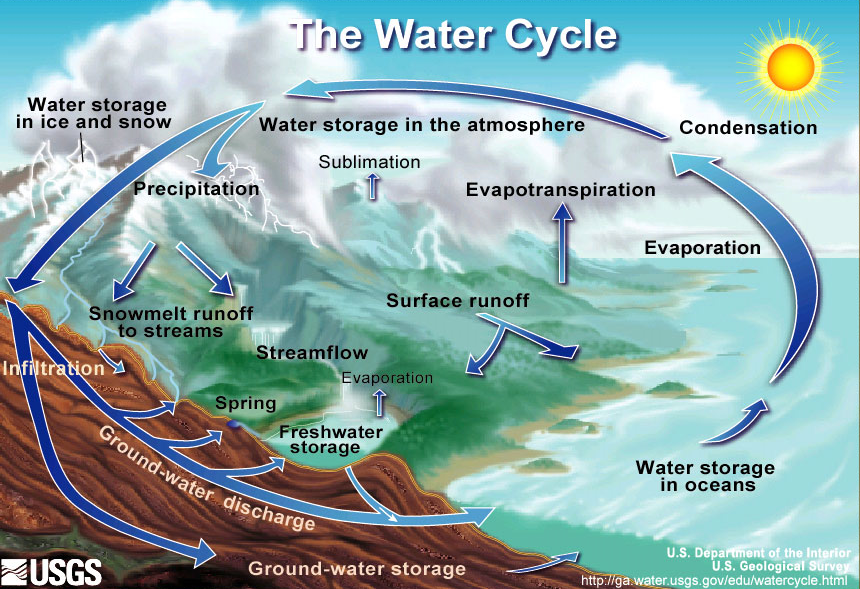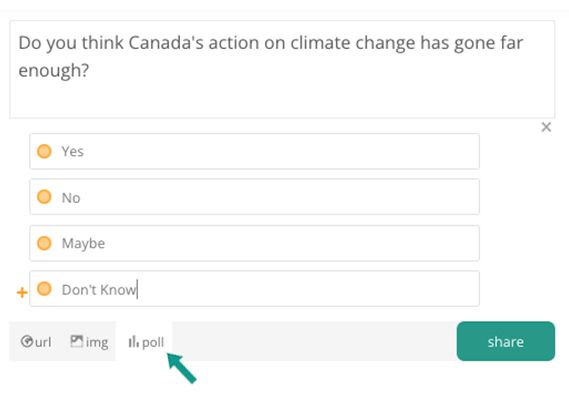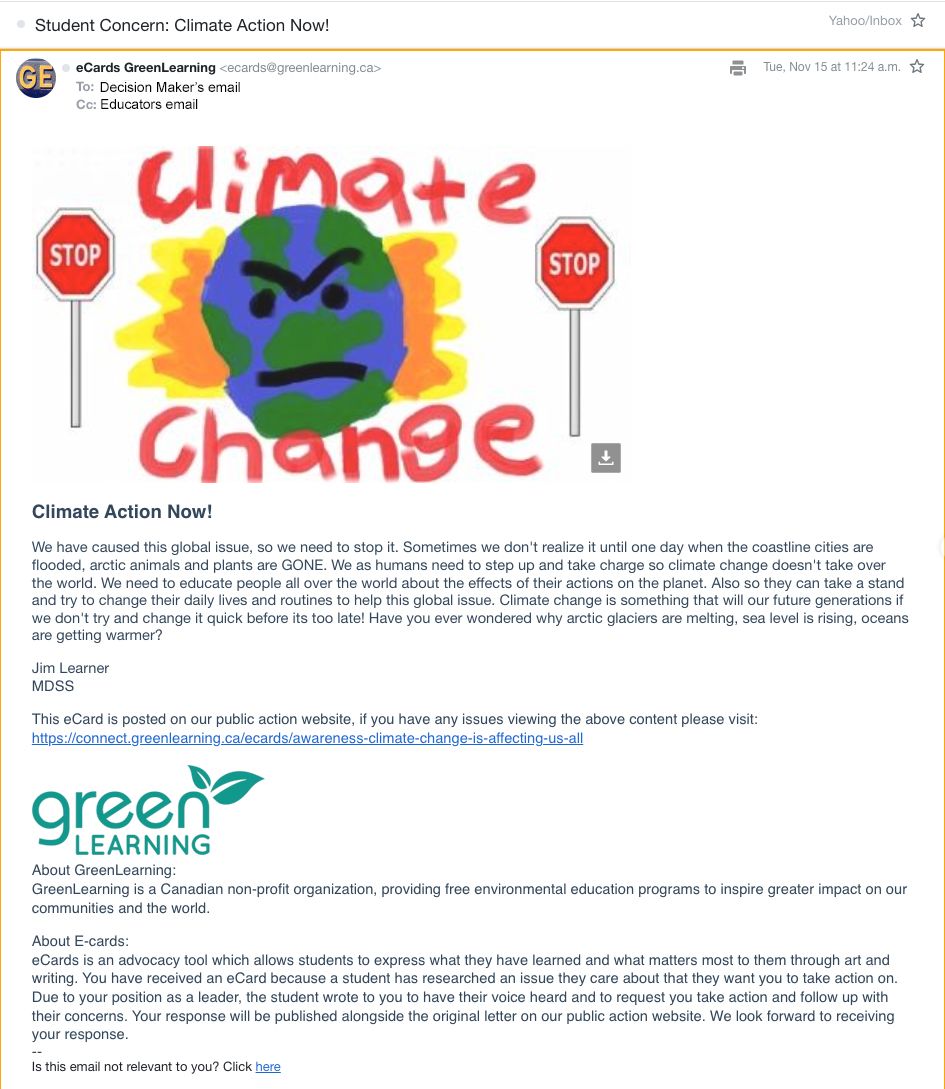Key Terms
FLOOD:ED CHALLENGE
100-Year Storm
The phrase “100-year storm” refers to the estimated probability of a
storm event happening in any given year. A 100-year event has a 1
percent chance (or 1-in-100 chance) of occurring in a year. The term
“100-year flood” allows us to place a particular weather event in
context with other similar events. These 100-year storms are defined by
the severity of the winds - the large amount of rain and the intensity
in which it falls and the flooding that results.
Climate Change
Climate change is the term used to describe the process by which
increasing levels, or concentrations, of carbon dioxide (CO2) -
primarily from the burning of fossil fuels - traps heat from the sun in
the earth’s atmosphere. This is shown to lead to a gradual warming of
our planet and its oceans, and consequently, significant changes to
local weather patterns. In the case of North America, experts predict
larger and more intense storms and extreme weather events. This results
in more rain falling in a shorter period of time as well as longer gaps
between storms. Also known as a flood-drought cycle.
Combined Sewer Overflow
Is a term used to describe the common problem that occurs when runoff
from storms flow down the storm water drain but overflow or mix with the
sanitary sewers - often making their way to the receiving rivers,
streams, lakes and oceans untreated.
Downspouts
A pipe to carry rainwater from a roof to a drain or to ground level.
They can be located on the outside of the building like in residential
buildings on the inside of the buildings in case of flat roofed schools
and commercial buildings.
Erosion
Erosion is the process of breaking down and moving soil and other
particles by wind, water, or other natural agents. In the case of soil
erosion it often occurs as rain and runoff picks up soil particles and
moves them downstream. Erosion of landscapes can lead to water pollution
and lost soil.
Extreme Weather
Is a term used to describe unexpected, unusual, unpredictable, severe or
unseasonal weather events. These weather events are considered extreme
because they at the rare in the historical record - defined as lying in
the most unusual ten percent.
French Drain
A trench filled with gravel or rock or containing a perforated pipe that
redirects surface water and groundwater away from an area.
Green Infrastructure
Is a term used to describe trees and
plants, marshes and ponds, green roofs and swales designed and
incorporated to manges runoff without the need to expand costly
centralized infrastructure like sewers and treatment plants.
Green Roof
A green roof or living roof is a roof of a building that is partially or
completely covered with vegetation and a growing medium, planted over
some kind of waterproofing material.
Inner Downspouts
Inner downspouts or drains are often found on larger buildings and many
school roofs. The drains are usually placed near the center of the
building. They attach to pipes that drain the water down through the
building’s roof. This keeps the water safely away from the walls and
foundation, but at the same time deposits the rain directly to the storm
sewers. Unlike outdoor downspouts and gutter systems, inner drains will
not freeze up and crack or fail during the winter. The building and
walls naturally protect the pipes from the elements. Strainers for inner
drains are critical. They assist in keeping any debris from clogging
the drain.
Mulch
Material (such as decaying leaves, bark, or compost) spread around or over a plant to enrich or insulate the soil.
Non-Permeable
A surface that does not allow liquids to pass through it (such as asphalt or concrete).
Permability
The measure of the ability of a substance to allow water or liquids to flow through it.
Permeable
A surface that allows liquids to pass through it (such as grass or mulch).
Pollution
Pollution is the introduction into the environment of a substance or
pollutant that is harmful or has poisonous effects on wildlife, humans
or the ecosystem as a whole. In the case of water pollution it can take
the form of plastics, hazardous chemicals like oil, pesticides and
fertilizers, industrial discharges or even human waste from sewer
overflows.
Rain Barrel
A rain barrel is a system that collects and stores rainwater from your
roof that would otherwise be lost to runoff and diverted to storm drains
and streams.
Rain Gardens
A rain garden is a sunken garden designed to capture, absorb and filter
stormwater during heavy rainfalls and after seasonal snow melts. In
addition to reducing stormwater runoff and infiltration rainwater safely
back into the ecosystem they can also provide habitat and food for a
variety of birds and butterflies. If designed correctly Rain Gardens are
considered green infrastructure, they slow down the flow of runoff,
holding and filtering it to be infiltrated over a longer period of time.
Strategically placed rain gardens are often used as a way to safely
disconnect a downspout, reducing the flow of stormwater runoff and
allowing water to slowly seeping into the ground -- rather than enter
the storm drain.
Rainfall Intensity
Rainfall intensity is measured over a 5-minute period. It is recorded,
in mm per hour, as the resulting accumulation as if the intensity
remained constant for a full hour. The more intense the rainfall, the
more likely that a sewer system will be overwhelmed and flooding and
sewer overflows will occur.
Runoff
Runoff is water - from rain, snowmelt, or other sources - that flows
over the land surface. Runoff is a component of the water cycle. If
runoff occurs on surfaces before reaching a drain it is also known as
overland flow. An area which produces runoff draining to a common point
is called a watershed. When runoff flows along the roof, pavement and
ground, it will pick up contaminants such as deposited air pollution,
plastic litter, cigarette butts, animal wastes, petroleum, pesticides
and fertilizers that are then discharged to sewers, and/or, local
streams, lakes and oceans. Urban areas have more surface runoff due to
impervious surfaces such as pavement and roofs that do not allow
percolation of the water down through the soil to the aquifer. Because
of the impermeable surfaces runoff is funneled into storm sewers,
ditches and streams, where pollutants, erosion and siltation can case
beach closures, fish kills and threats to wildlife. Increased runoff
reduces groundwater recharge, thus lowering the water table, as well as
reducing water flow to local streams and rivers and making droughts
worse, especially for farmers and others who depend on water wells.
Runoff Footprint
A footprint is an expression meaning the environmental impact made by
something. Runoff footprint is the amount of water that runs off
surfaces into sewers, drains, streams, etc.
Semi-Permeable
A surface that allows some liquids to pass through it (such as
semi-permeable pavement). These can have different percentages of
liquid flow through them, but for the purposes of our Activities, we
shall assume a semi-permeable surface is 50% porous.
Sewer Sheds
Sewer systems are the most common way of dealing with stormwater runoff
in urban settings. In many cities, there is a single system for dealing
with both sewage and stormwater. This one system collects waste and
runoff and carries it to a sewage treatment plant, where it is all
treated and discharged. In wet weather, or during spring thaws, the
amount of water flowing through the combined sewer system can overwhelm
the systems. When this happens the excess water, a mix of runoff and
sewage, leaves the sewer system through emergency exits, which usually
lead directly into rivers, streams and oceans. So on a very rainy day,
untreated sewage can be dumped directly into our environment. However,
even in a relatively light rain event, some cities treat the runoff as
though it were sewage.
Sewer System
When we walk in our cities we seldom give a thought of what runs under
our feet. Sewers! These underground tunnels take waste water from our
showers and toilets to the treatment plant before it is discharged to
our streams, rivers, lakes and oceans. When it rains, water that runs
off roofs and roads and flows to that sewer system. Sewer systems are an
essential part of the urban infrastructure and our cities depend on how
well they work. But, across Canada sewer systems - and the amount of
treatment they provide - differs greatly. In many cities, we have a
single system for dealing with both sewage and stormwater. This one
system collects waste and runoff and carries it to a sewage treatment
plant, where it can be treated. In some cases the sanitary sewer is
separated or, partially separated. In the case of partially separated
sewers storms can cause the runoff to mix with the sewage. when sewer
systems become overloaded they discharge the untreated water to the
environment. Some separated storm sewers systems treat stormwater, and
some discharge directly without treatment.
Storm Sewer
The storm sewer is a system designed to carry rainfall runoff and other
drainage. It is not designed to carry sewage or accept hazardous wastes.
The runoff is carried in underground pipes or open ditches and
discharges untreated into local streams, rivers and other surface water
bodies.
Stormwater
Stormwater is water that originates during precipitation events and
snow/ice melt. Stormwater can soak into the soil, be held on the
surface, or runoff and end up in nearby streams, rivers, or other water
bodies (surface water). In natural landscapes such as forests, the soil
absorbs much of the stormwater and plants help hold stormwater close to
where it falls. In urban areas unmanaged stormwater can create two
major issues: one related to the volume and timing of runoff water
(flooding) and the other related to potential contaminants that the
water is carrying (water pollution).
Stormwater Infrastructure
Stormwater infrastructure is essential to managing the impact of sudden
and heavy rainfall or the gradual melting of snow and ice come
springtime. This infrastructure can be designed and built -- like sewers
and drains, or natural like streams, ponds and trees and plants.
Swales
A swale is a shallow channel with gently sloping sides. A swale may be
either natural or human-made. Artificial swales are often designed to
manage water runoff and filter pollutants.
Water Cycle
The water cycle is the continuous movement of water on, above and below
the surface of the Earth. Oceans contain 97% of the world’s water. As
heat evaporates this water it forms clouds. Some of these clouds are
pushed over land. When it rains or snows, the precipitation falls onto
the ground. It can soak into the ground, where it nourishes plants, soil
and groundwater, but it can also runoff - especially in urban areas -
and this can carry pollution. Precipitation can be evaporated directly
from water bodies, or it can be used by plants, which then breathe it
back into the air. Once the water vapour ends up back in the atmosphere
it cools and condenses, forming clouds, which then return the water to
the surface of the earth through rain. It’s all one big cycle!

John Evans and Howard Periman, USGS - http://ga.water.usgs.gov/edu/watercycle.html
Watersheds
The surface of the Earth can be divided up into areas we call watersheds
based on where water flows within that area. Any drops of rain that
fall in a given watershed will eventually run downhill. Because all
water is flowing downhill, towards streams, rivers and the oceans, our
activities have an impact on everything that happens downhill of us.
Watersheds are separated by hills or ridges, so the rain falling on one
side of a hill may end up in a different watershed than rain falling on
the opposite side.
GreenLearning
creates free education programs about energy, climate change and green
economy that engage and empower students to create positive change.
Support
© 2022 GreenLearning. All rights reserved.










Activity link under private class group.





